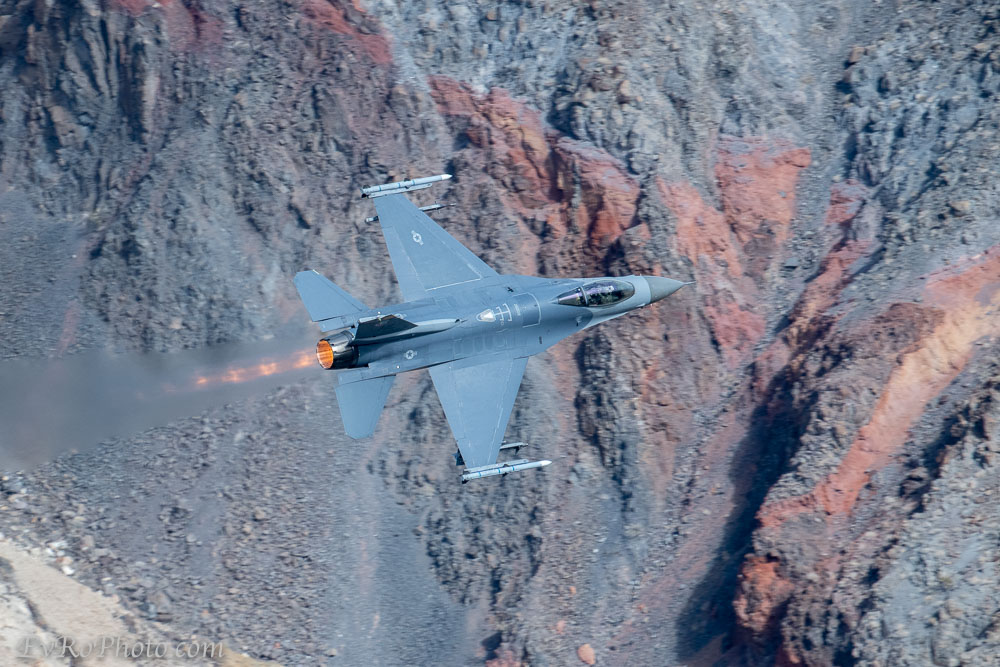
388th FW, based at Hill AF Base, Nevada
So I’m on my way to Stovepipe Wells, in Timbisha, for a repeat of November 2017’s Visionary Death Valley Workshop. Although I got moving a day later than I had hoped, I still had extra time that I planned to use for photography on the way.
Primarily, I was looking for a place where I could photograph aircraft. I’ve heard of it, I’ve read a bit about it, and it was on the way, so I stopped there.
Not much to mark the location, but there were four or five cars in a pullout, so I parked next to them, loaded up my gear (way more than I needed, as it turns out), and hiked up the trail.
When I got to the top I met Chris and Larry. Chris is from Sussex, and has unspecified business that brings him to Vegas many times a year. Each time he comes he rents a car and drives out here. Chris knows more about the planes, units, planned training and events than I suspect DOD would be comfortable with. Larry is from Memphis, and is a dentist, retired from the Navy and I presume in private practice. He tries to get out here a couple of times a year, and supplements with photographing planes at events nearer to home. They are friendly and offer advice, stories, and companionship for the next four hours or so.
I heard a plane go by while I was putting my gear together in the rig, and it passed by as I was walking. And just as I crested the ridge, there was what I had come for — a warbird shooting the canyon, below ridge level. I didn’t have a camera out, but the trip was already worth it. I told Chris and Larry that I’d achieved two major goals already: I’d found the place, and I seen a plane fly it. Pictures were almost gravy.
Waiting for the planes is like piloting is supposed to be: long periods of quiet boredom interspersed with brief moments of intense activity. You don’t get much warning. There were a couple of other guys up one side of the saddle from us that either had a better view or better comms/access to ADSB data, because before some passes they would call down to us.
We went mostly by sound. You can hear a jet a long way away in the desert, but once they got close, there wasn’t much else they were going to do, so we’d get up off our folding chairs, pick up our cameras, and look to the west. Whoever sees the plane first calls out something about it — type, whether it’s high or low, — anything to make it clear that the pass is starting.
Then you focus and shoot, panning, zooming as you can. A pass takes less than 10 seconds. You chimp, and show each other what you’ve got. If it’s clear enough, you can find out the pilot’s name (and the wizzo’s, if there is one) from the text on the fuselage. Chris speaks about the exact model of the plane, what unit it’s from, and whether it’s in current livery or waiting to get repainted (Chris is a grognard, there’s no question about that). You know if a plane makes multiple passes because you can read the ID numbers. Some come back twice. Some fly above the ridgeline, most below. Some come through in fluid twos (if that’s still what they call the pair flying).
In four and a half hours, I think I see seven passes. I don’t get sharp images on them all — it’s like birds in flight, but different, and I don’t have my focus settings quite right. But I get three decent images at least.
I heard from Larry that the guy with the most time here has spent more than 365 days shooting at the canyon. I’ve got one, but I think I’ll be back.